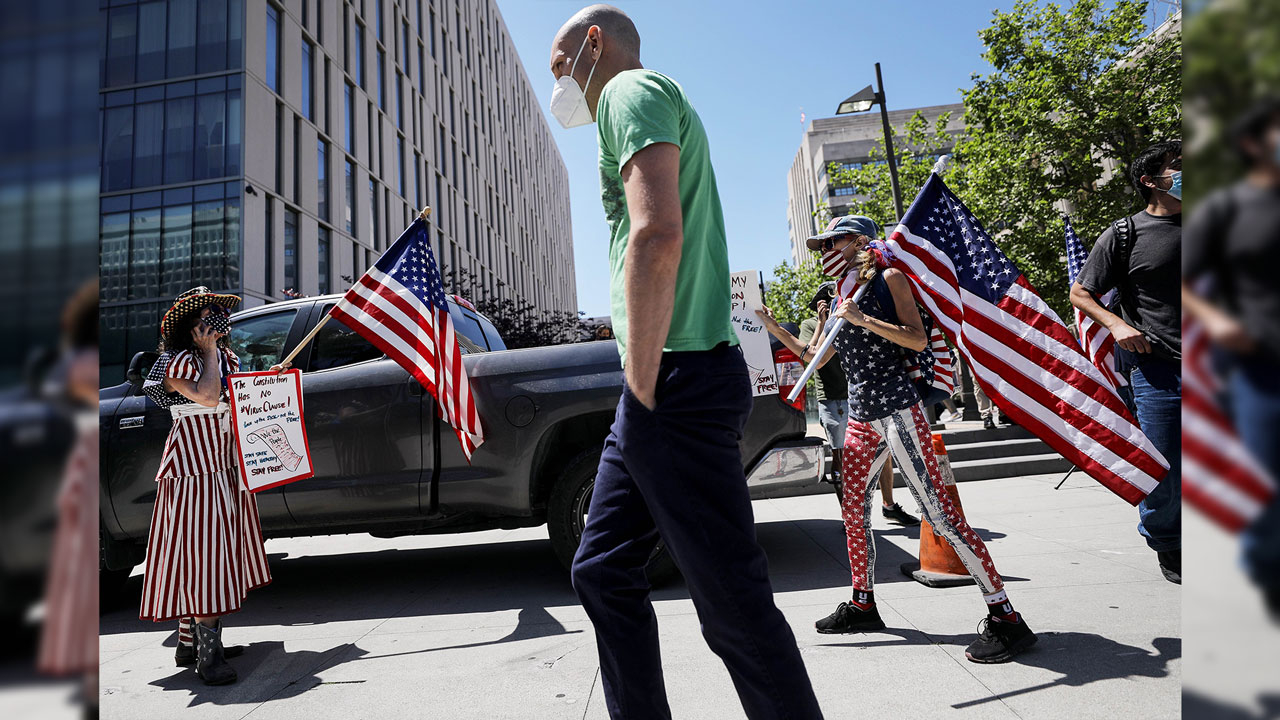
Protesters rally against county's shelter-at-home order at Los Angeles City Hall, California, U.S. /AFP
Protesters rally against county's shelter-at-home order at Los Angeles City Hall, California, U.S. /AFP
The record for first COVID-19 death in the U.S. has been updated to February 6, weeks earlier than the previously known date of February 29.
This may indicate that the deadly disease existed in the U.S. much earlier than initially thought.
Health officials in Santa Clara County, California, examined tissue samples of a person who died at home on February 6 and confirmed that the person was infected with COVID-19, the coronavirus-caused disease that has spread across the world killing more than 160,000 people so far.
The person had no travel record that would have led to direct infection of the disease, Dr Sara Cody, the health officer for the county, told media at a press conference.
This means the person likely caught the virus through community spread. That is to say, the disease existed in the community before the person became sick.
"Somebody who died on February 6, they probably contracted that virus early to mid-January," Dr Ashish K. Jha, director of the Harvard Global Health Institute, said on CNN's "New Day" Wednesday. "It takes at least two to three weeks from the time you contract the virus and you die from it."
"Each of these deaths... are really like iceberg tips," Cody explained. "There must have been a somewhat significant degree of community transmission."
It is still hard for health researchers to find the actual patient zero in the U.S. because many people were infected with normal influenza in December 2019 and January 2020.
"It may have been part of our influenza numbers because it looks a lot like influenza. [It's] really difficult to pick those things apart," Cody said.
Jha echoed Cody's opinion.
"We really need to now go back, look at a lot more cases from January – even December – and try to sort out when did we first really encounter this virus in the United States," Jha told CNN.
Further statewide investigations are underway to examine the early origins of the virus, according to The New York Times, citing Gavin Newsom, governor of California on Wednesday, and there could be "subsequent announcements."
"Investigators are looking at coroner and autopsy reports going back to December in some counties," he added.
Earlier hints
This is not the first time that clues have been revealed to challenge the timeline of the novel coronavirus' transmission in the U.S., where the currently understood first confirmed COVID-19 case happened on January 21.
Dr Jeff Smith, a physician who is the chief executive of Santa Clara County government, said in a recent briefing that the coronavirus had established itself in San Francisco Bay Area months before local health officials were aware of it.
Data collected by the federal Centers for Disease Control and Prevention, local health departments and others suggest it was "a lot longer than we first believed" – most likely since "back in December," he said.
Earlier in April, a U.S. pediatric emergency medicine physician tweeted that he tested positive for novel coronavirus antibodies.
Peter Antevy, who works for a hospital in South Florida, said in his post that he had developed "flu like illness but much worse" in the first week of January and almost went to seek help.
He checked his COVID-19 antibody status on April 3, and got a positive result, indicating that he had a past infection.
People post hundreds of comments after his post, claiming that they had also developed similar symptoms months before January 21.
(CGTN's Gao Yun also contributed to this story.)